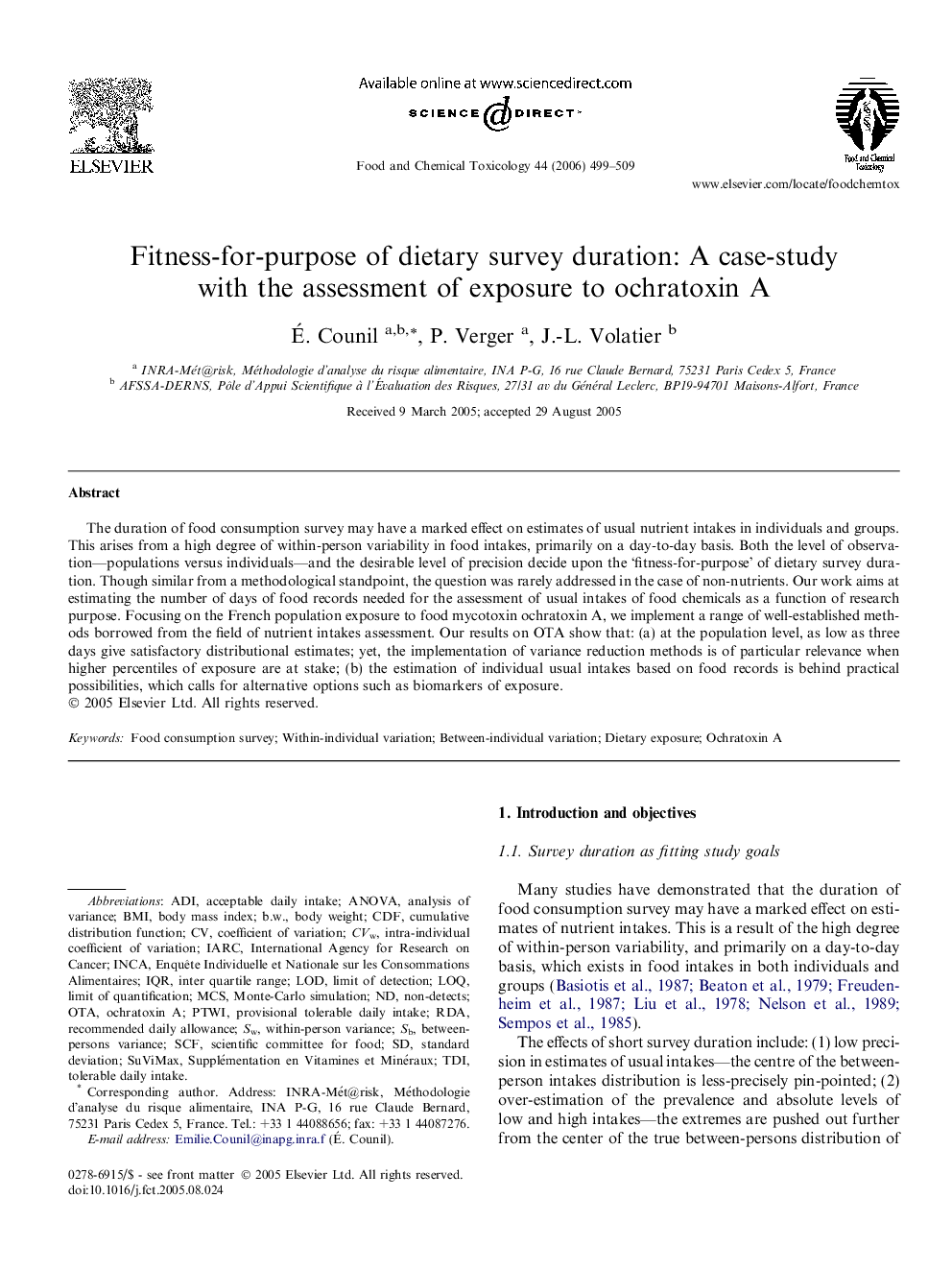| Article ID | Journal | Published Year | Pages | File Type |
|---|---|---|---|---|
| 2587896 | Food and Chemical Toxicology | 2006 | 11 Pages |
The duration of food consumption survey may have a marked effect on estimates of usual nutrient intakes in individuals and groups. This arises from a high degree of within-person variability in food intakes, primarily on a day-to-day basis. Both the level of observation—populations versus individuals—and the desirable level of precision decide upon the ‘fitness-for-purpose’ of dietary survey duration. Though similar from a methodological standpoint, the question was rarely addressed in the case of non-nutrients. Our work aims at estimating the number of days of food records needed for the assessment of usual intakes of food chemicals as a function of research purpose. Focusing on the French population exposure to food mycotoxin ochratoxin A, we implement a range of well-established methods borrowed from the field of nutrient intakes assessment. Our results on OTA show that: (a) at the population level, as low as three days give satisfactory distributional estimates; yet, the implementation of variance reduction methods is of particular relevance when higher percentiles of exposure are at stake; (b) the estimation of individual usual intakes based on food records is behind practical possibilities, which calls for alternative options such as biomarkers of exposure.
